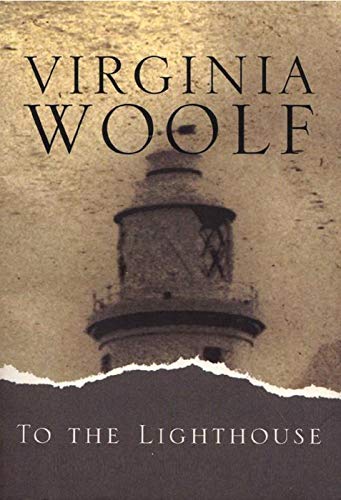In the ever-evolving landscape of American literature, few works have captured the essence of human emotion and psychological complexity as profoundly as To the Lighthouse by Virginia Woolf. This novel, often considered a cornerstone of modernist literature, delves into the intricate interplay of time, memory, and perception. As we navigate through the current cultural and social currents in the United States, it becomes increasingly relevant to revisit and reflect on such literary masterpieces. The themes explored in To the Lighthouse resonate deeply with contemporary issues, offering insights into the human condition that remain timeless.
Understanding the Narrative Structure
To the Lighthouse is divided into three distinct sections, each offering a unique perspective on the characters and their experiences. The first section, “The Window,” is characterized by its intimate portrayal of the Ramsay family and their guests during a summer at their seaside home. Here, Woolf employs a stream-of-consciousness narrative, allowing readers to experience the inner thoughts and feelings of multiple characters simultaneously. This technique not only immerses the reader in the characters’ minds but also highlights the complexities of human relationships and emotions.
The second section, “Time Passes,” presents a more distant and fragmented view of the passage of time. In this segment, the house is left vacant, and the narrative moves through the years, touching on significant events such as the death of Mrs. Ramsay and the impact of World War I. This shift in perspective allows Woolf to explore the theme of change and the inevitability of time, reflecting on how life and relationships evolve over the years.
Finally, the third section, “The Lighthouse,” returns to a more intimate narrative, focusing on the characters’ return to the house and their reflections on the past. This section emphasizes the importance of connection and the enduring nature of love and memory, even in the face of loss and change.
Character Development and Emotional Depth

One of the most striking aspects of To the Lighthouse is Woolf’s ability to develop her characters through their thoughts and actions. For instance, the young son, James Ramsay, is introduced through his internal struggles and emotional responses to the world around him. His conflicting emotions—joy and disappointment—are vividly portrayed, allowing readers to connect with his experiences on a personal level. This method of character introduction not only adds depth to the narrative but also underscores the importance of understanding the internal lives of individuals.
Similarly, the character of Tansley is introduced through his interactions with other characters, revealing his personality and beliefs without direct exposition. This approach enables readers to form their own judgments about the characters, fostering a deeper engagement with the story.
Woolf’s exploration of contradictory abstract nouns, such as truth and deceit, further enriches the narrative. These themes are woven throughout the novel, reflecting the complexities of human relationships and the moral dilemmas faced by the characters. By presenting these contradictions, Woolf challenges readers to consider the nuances of human behavior and the impact of societal expectations.
Setting and Symbolism

The setting of To the Lighthouse plays a crucial role in shaping the narrative and enhancing the thematic elements of the novel. The summer home, surrounded by the ocean, serves as a symbol of both freedom and confinement. The natural beauty of the environment contrasts with the emotional turmoil experienced by the characters, highlighting the tension between external beauty and internal struggle.
Woolf’s descriptions of the setting are imbued with emotional resonance, as she captures the sensory experiences of the characters. The shifting light and colors of the sea, for example, mirror the characters’ changing moods and perceptions. This attention to detail not only enhances the reader’s immersion in the story but also reinforces the themes of time and memory.
The Role of Love Languages
Another significant aspect of To the Lighthouse is the exploration of love languages, which reflects the diverse ways in which individuals express and receive love. Woolf illustrates how different characters perceive and respond to love, emphasizing the importance of understanding these differences in relationships. For instance, the relationship between Mr. and Mrs. Ramsay is marked by a complex interplay of affection and conflict, showcasing the challenges of maintaining intimacy in the face of external pressures.
Through the character of Lily Briscoe, Woolf also examines the idea of artistic expression as a form of love. Lily’s journey as an artist mirrors her personal growth, highlighting the connection between creativity and emotional fulfillment. This aspect of the novel resonates with contemporary discussions on the role of art in expressing and understanding human emotions.
Conclusion
In conclusion, To the Lighthouse by Virginia Woolf remains a vital work in the American literary canon, offering profound insights into the human experience. Its exploration of themes such as time, memory, and love continues to resonate with readers today, making it a relevant and thought-provoking read. As we navigate the complexities of modern life, the lessons learned from Woolf’s novel remind us of the importance of understanding our own emotions and the emotions of those around us.
For those interested in exploring the themes of To the Lighthouse further, there are numerous resources available, including academic analyses and literary critiques. Engaging with these materials can deepen one’s appreciation for the novel and its enduring relevance in today’s society.
Stay updated with the latest news and insights on American literature and culture by following our blog and subscribing to our newsletter. Discover how classic works continue to influence contemporary discussions and shape our understanding of the world around us.













More Stories
US Trending News: How to Claim Your Joy: A Guide to Finding Happiness and Inner Peace
US Trending News: Explore Www.hobbylobby.com: Your Ultimate Guide to the Official Site
When Is Trick Or Treating in 2024: A Complete Guide for Halloween